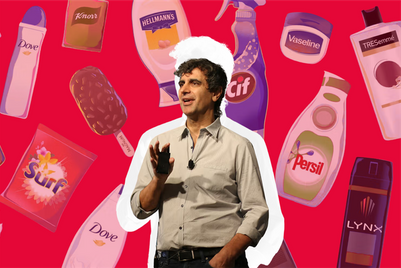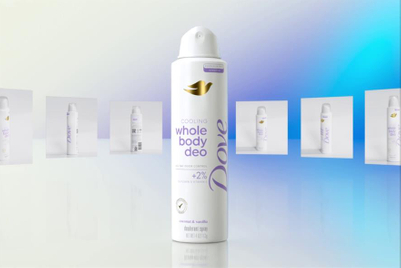
Indonesia's neighbours are gluttons when it comes to ice cream. New Zealand has the world's highest per capita consumption - 28.4 litres annually - while Australia weighs in third at 18 litres, and equatorial Singapore wears the crown as Asia's ice cream leader with 2.4 litres.
Indonesia, in contrast, probably has the lowest. Yet Unilever, marketers of Wall's ice cream, sees the country as the next hot spot for frozen desserts and, by investing in product development, promotion and distribution, the multinational appears to be single-handedly growing the market.
Last year, according to Nielsen Indonesia, ATL advertising for ice cream totalled Rp288.5 billion (US$27.7 million), and Unilever was dominant, spending Rp269.5 billion, more than 90 per cent of the category on its Wall's brand. Eight of Unilever Indonesia's 16 flavours were promoted last year, including Cornetto (Rp67.8 billion), Paddle Pop (Rp60.5 billion) and Moo's Active (Rp45.5 billion).
Each ice cream Unilever promoted had an ATL budget larger than the total budget of Wall's' biggest rival - Indonesia's Campina.
Nearly all of the remaining adspend came from Campina (Rp14.2 billion). It advertised its brands Avatar and Baby Concerto, as well as ice cream cakes.
Two other major ice cream makers, Indolakto and Diamond Cold Storage barely spent a rupiah. Nor did Häagen-Dazs, Baskin-Robbins, New Zealand Natural or any of the other international ice cream parlours that dot Jakarta's affluent shopping malls.
Unilever has big plans for Indonesia. But the country's per capita income is $599.24, one of the lowest in Asia, and 32.3 per cent goes to the top one per cent.
"Big tubs of ice cream for the home are out of reach for most Indonesians," says Debnath Guharoy, regional director, Asia for Roy Morgan Research. "This is why penetration is static at around 10 per cent, even though volumes may be growing via affluent homes."
Euromonitor estimates Indonesians consumed 85.2 million litres of ice cream last year, a minuscule 0.35 litres for each of the archipelago's 243 million people. Yet even that consumption level marked a great leap forward - 34.2 per cent - from the 63.5 million litres consumed in 2004.
Significantly, value sales grew at double that rate last year compared to 2004 sales.
"Ice cream is growing faster than other food and beverage products sold through modern retail," says Teguh Yunanto, executive director, retail measurement, Nielsen Indonesia. "Nielsen's home panel, conducted in Indonesia's five major cities: Jakarta, Bandung, Surabya, Semarang and Medan, shows that less than 70 per cent of households buy ice cream. Those that do, purchase it about 10 times a year."
According to Yunanto, trade is approximately 10 to 15 per cent of the total grocery category. That means that nearly four fifths of sales come from smaller cities and rural areas. Yet, in these districts incomes plummet, as does the penetration rate of household refrigerators, which is 20 per cent in Indonesia, according to one regional survey. This is compared to 40 per cent for the Philippines and China, 80 per cent in Thailand, and more than 90 per cent in the rest of Asia.
Euromonitor reports that one third of national ice cream sales are single-serving, impulse purchases from vendors cruising residential areas on bicycles.
That is yet another channel that Unilever is developing for its Wall's ice cream, covering this lower than average price point, while offering pricier variants through retail outlets, and flirting with the upper end by taking the Wall's brand into malls at its recently launched Swirls ice cream counters. It seems to be paying off. Euromonitor found that Wall's' market share grew to 51.2 per cent in 2008 from 44.9 per cent in 2004, while Campina simply held share at 20 per cent.
Analyst comment:
Yvonne Kok, research manager, Euromonitor International:
"Unilever is the clear leader in ice cream sales in Indonesia, but it's not resting on its laurels. The company is pushing beyond conventional marketing and launching innovative initiatives to entice ice cream lovers.
Moving away from traditional TV and billboard advertisements, Unilever is using modern digital technologies. As an Indonesian first and as part of a global initiative, the company rolled out two animated movies - Paddle Pop Pyrata and Paddle Pop Kombatei - that seek to inspire young children with the values of courage, adventure, and cooperation. Unilever has extended this content with interactive online games and DVDs.
For Unilever, the result is pester-power, which plays a significant role in impulse purchases. Elsewhere, Unilever is adapting to evolving media. Indonesia ranks as the third largest country globally for Facebook accounts, and Unilever has established a Facebook presence to foster discussion of Unilever's products to inform the youth and young-adult segments of its new ice cream flavours and innovations.
Unilever's Facebook community is built on top of its existing community of consumers on Friendster/Twitter. Such social networking efforts are complemented by websites. For example, www.icecreamoflove.com, which likewise bolsters brand presence through the emotional draw of social events and life experiences.
Mothers are not left out in the cold, and Unilever lets them air their views at www.mamamootemanmoo.com, completing a comprehensive arc of modern-day communications - all of which is dedicated to ice cream."
This article was originally published in the 12 August 2010 issue of Media.




.jpg&h=334&w=500&q=100&v=20250320&c=1)

.jpg&h=334&w=500&q=100&v=20250320&c=1)


.jpg&h=334&w=500&q=100&v=20250320&c=1)

.png&h=334&w=500&q=100&v=20250320&c=1)
.jpg&h=268&w=401&q=100&v=20250320&c=1)






